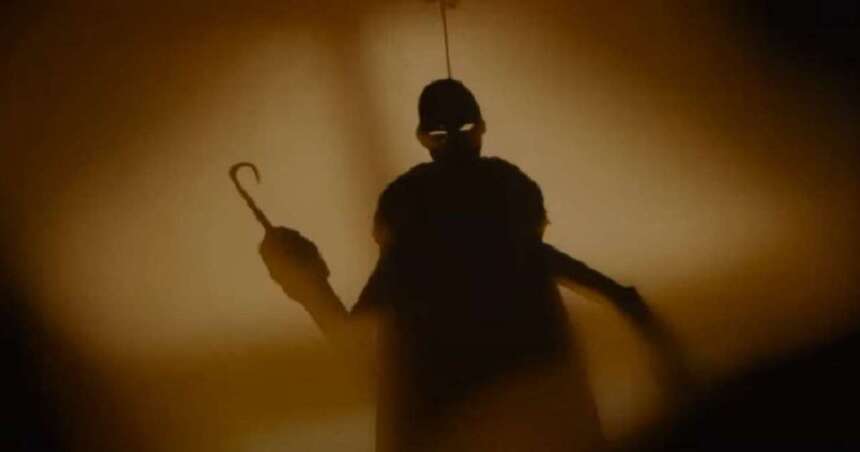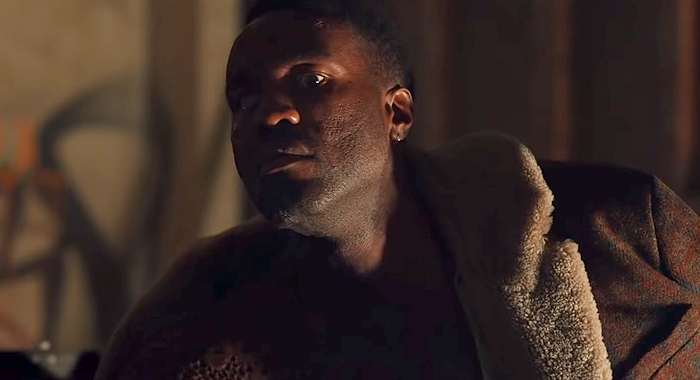Review: CANDYMAN, Tell Everyone
Nia DaCosta directs a more than worthy succesor to the classic 90s horror.

Anthony (Yahya Abdul-Mateen II) should be about to hit the big-time in the art world. Having had his first solo show straight of of art school, he's found he's hit a creative wall. Pressured to produce something new, something that reflects what the world wants to see perhaps more than what he wants to offer, he stumbles across an urban legend, one that become embedded in a Chicago neighbourhood, and which quite literally consumes Anthony as his art takes on a frightening meaning, and even his body itself becomes a gruesome work of art. As Anthony says, everywhere is haunted, but some places perhaps far more than others.
We've been waiting for the new Candyman — directed by Nia DaCosta, co-written by DaCosta, Win Rosenfeld, and Jordan Peele (who also served as Producer) — for more than a year, and it was definitely worth it. It's the kind of terror that digs deeper and deeper under your skin until terror is the only place the characters, and the audience, can live. Brilliantly crafted, infused with the spirit of its predecessor and yet its own film, it layers history, horror, and the contemporary landscape to examine generational trauma and cycles of abuse and neglect.
Anthony and his girlfriend and art curator Brianna (Teyonnah Parris) have just moved into the latest high-rise building in the former Caprini Green area. When Anthony goes looking for inspiration among the last of the low-rise buildings still standing, he meets William (Colman Domingo), who tells him of another Candyman, who was beaten to death by police. As Anthony dives deeper into his art, it seems the monster has been unleashed, killing those who dare to speak his name, and following Anthony, who seems to be transforming to the next iteration.
While the trope of the reflection, our identity as seen by others and by ourselves, is a familiar one in cinema, this is doubled down in Candyman. Persons from marginalized group are constantly expected to justify their existence in certain (or arguably most) spaces, are constantly reminded that they are other, and are punished simply for being that other. As William points out, Black people are wanted for they can give, but not for themselves. Anthony seems uncomfortable in almost all spaces he enters, especially as he finds his fame is increasing not due to his work, but his work's connection to some gruesome deaths.
This connects to a collective trauma, which has manifested in this monster, each individual who dies at the hand of white people, and is resurrected as a Boogeyman, feared by the Caprini Green community, ignored (at their peril) by whites. As Anthony falls deeper into his obsession, he becomes more afraid of Candyman, but less afraid of those who have the power to make or break his career. What is the boogeyman, in this case what is Candyman, but a creation of white supremacy, generations of Black men who have been murdered and come back to prey on those who would forget them?
DaCosta is methodical and deliberate in her execution of the story. She gives us the wonderful macabre murders we seek in a horror film, but more importantly, she gives us the spaces: the now-glamourous high rises that sits on the bones of the ghetto, the walls that box in Anthony and others, the reflective surfaces that remind them that any of them could become Candyman, that it's the idea of him that comes from that collective trauma. When we are in these spaces, the sound editing gives us a low echo or pounding, anything that could be felt in the bones. (A hat tip to the location scout for this film; there is one brief scene when Anthony is walking in a tunnel, and the rain coming down on the plastic windows might not seem omninous, but in the context it's the kind of sound that makes you start to hide under the covers.)
This is not just Anthony's story, it's also Brianna's: as a woman, she's expected to carry more of the burden, and she has her own demons lurking in her past. Parris carries this weight of staying in the real world until she knows how to use what little power she is allowed. Abdul-Mateen's portrayal of Anthony's slow disintegration, his inability to flourish as he should due to the scoeity he lives in, the family history that makes the horror inescapable, is terrifying and wholey believable. As each of them enounter those who keep trying to put them in a particular box (again, they are not wanted for themselves, but only for what 'goods' they can offer), it seems their only course of action is to accept, or become, the monster. Again, we can see how DaCosta has taken the necessary time with her actors, allowing them the space to breathe into their roles and process the pain and madness their characters experience.
Combining the silhouette puppet show with the storytelling promotes the collective nature of the urban legend, as each storyteller adds to or adjusts how we view the legends of Helen, Robitaille, and the other Candymans. Juxtaposed against the mostly very modern high rises, the low-rise social housing deliberately left to rot, and the wide, neglected spaces separate these, we can see how these combine to create these legends. As Williams says, the rotting comes from the inside, and no amount of cosmetic changes will make a difference, until the rot is cured.
Candyman is powerful and disturbing, one that keeps the audience on the other side of the mirror, watching as that individual and collective trauma is forced to be inescapable to those left vulnerable.
Candyman opens in cinemas in North America on August 27th.
Candyman
Director(s)
- Nia DaCosta
Writer(s)
- Jordan Peele
- Win Rosenfeld
- Nia DaCosta
Cast
- Yahya Abdul-Mateen II
- Teyonah Parris
- Nathan Stewart-Jarrett








